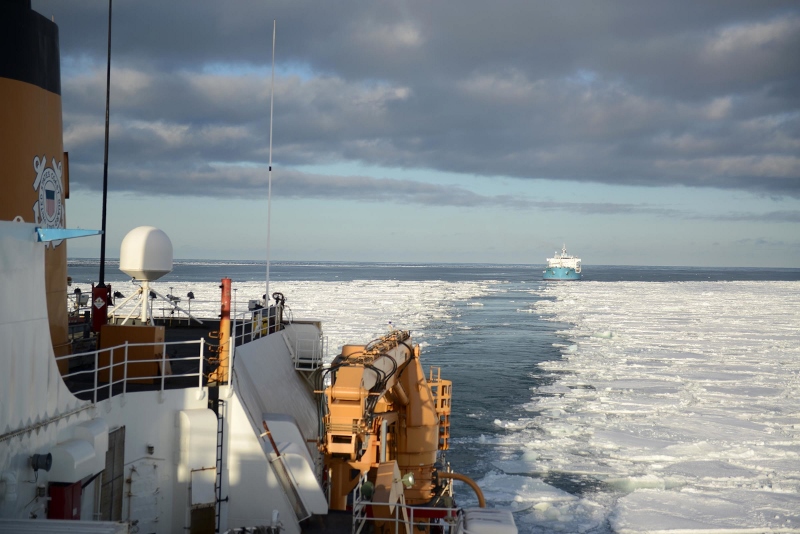In a major step toward a new U.S. polar icebreaking fleet, the Coast Guard announced Wednesday it had awarded five fixed-price contracts worth $20 million for heavy polar icebreaker design studies and analysis.
The contracts went to Bollinger Shipyards LLC, Lockport, La.; Fincantieri Marine Group LLC, Washington, D.C.; General Dynamics/NASSCO, San Diego; Huntington Ingalls Inc., Pascagoula, Miss.; and VT Halter Marine Inc., Pascagoula, Miss.
The Coast Guard wants to expedite the design for a new class of three heavy icebreakers to be delivered in 2023-2026. In October 2016, it put out a request for information on design studies. They are to be completed over the next 12 months. The Coast Guard’s timetable foresees a request for proposals (RFP) for design and build to be released in spring 2018, and the contract for the first vessel awarded to a single U.S. shipyard in the third quarter of fiscal year 2019.
In the study and analysis stage, the Coast Guard is asking shipbuilders to “identify design and systems approaches to reduce acquisition cost and production timelines.” The development designs must come with expected cost and schedule figures. The contracts also require companies to “examine major design cost drivers; approaches to address potential acquisition, technology, and production risks; and benefits associated with different types of production contract types,” according to the Coast Guard.
The five sets of studies will be used by Coast Guard and Navy personnel who staff the heavy polar icebreaker integrated program office, “to refine and validate the draft heavy polar icebreaker system specifications,” according to the Coast Guard. The move to use design studies was influenced by the Navy’s acquisition experience with its Landing Craft, Utility (LCU) amphibious transport ships and T-AO(X) fleet oilers, which are being acquired under accelerated acquisition schedules.
Only one U.S. heavy icebreaker, the 399’x83’x31’ Polar Star, is in operation — recently deployed to Antarctica — and its 40-year-old sister ship Polar Sea is tied up, occasionally used to supply spare parts.
The announcement of the design study contracts came one day after Rep. Duncan Hunter, R-Calif., chairman of the House Subcommittee on Coast Guard and Maritime Transportation, sent a letter to the Trump administration urging full funding for the icebreaker program.
"Not only have we not built a new icebreaker since the late 1970s, the Coast Guard is being forced to order parts online and cannibalize older vessels to maintain a minimum level of operability — just to operate a single heavy icebreaker," Hunter wrote. For months Hunter and his subcommittee colleagues from both parties had likewise urged the Obama administration, Coast Guard and Congress to move faster on getting a new icebreaker class launched, at an estimated cost of $1 billion for starters.
“These contracts will provide invaluable data and insight as we seek to meet schedule and affordability objectives,” Rear Adm. Michael Haycock, the Coast Guard’s director of acquisition programs, said in announcing the contract awards. “Our nation has an urgent need for heavy polar icebreaking capability. We formed an integrated program office with the Navy to take advantage of their shipbuilding experience.”
On Feb. 7, U.S. and Canadian officials formalized a partnership to test and validate potential heavy polar icebreaker design models at Canada’s National Research Council (NRC) in St John’s, Newfoundland. The NRC owns one of the world’s largest ice tank facilities, used to measure the performance and evaluate the safety of ice-going ships and structures in controlled scale model conditions. Simulation in the tank lets engineers model sea ice conditions, including first-year and multiyear ice, pack ice, ridged ice and glacial ice.
That testing will analyze maneuverability in ice and icebreaking resistance and powering, to better assess baseline requirements for the new heavy icebreakers. Model and test activities at St. John's are scheduled to begin in April. The Coast Guard and Navy will conduct additional model test work to evaluate the performance of the icebreaker in open water at the Naval Surface Warfare Center, Carderock Division, in Bethesda, Md.




